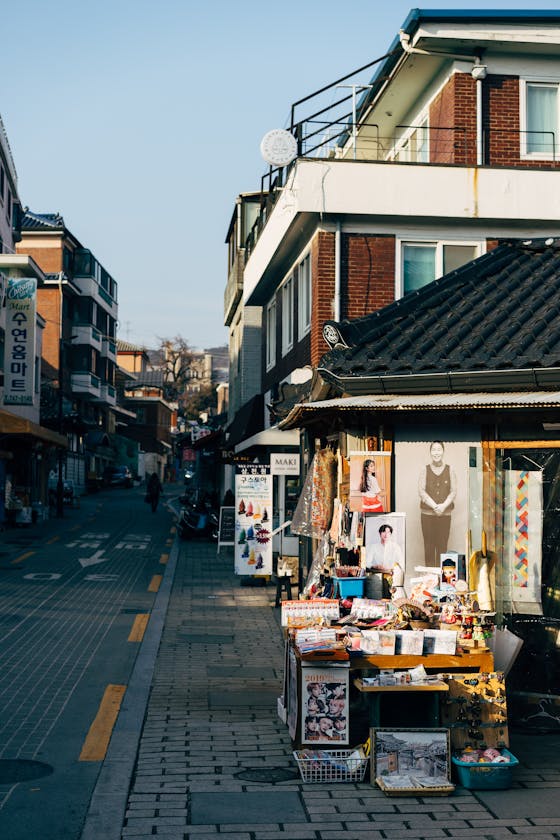Table of Contents
INTRODUCTION
Among Korea’s famous tourists attractions, there are many cases where modern values are added to historically significant cultural heritage or, conversely, traditional elements are added to modern spaces. For Koreans, it is a valuable cultural heritage and a vibrant living space, and for foreigners, it is the starting point for tourism in Seoul Korea tourist attractions.
Traditional village
Bukchon Hanok Village (popular tourists attractions place)
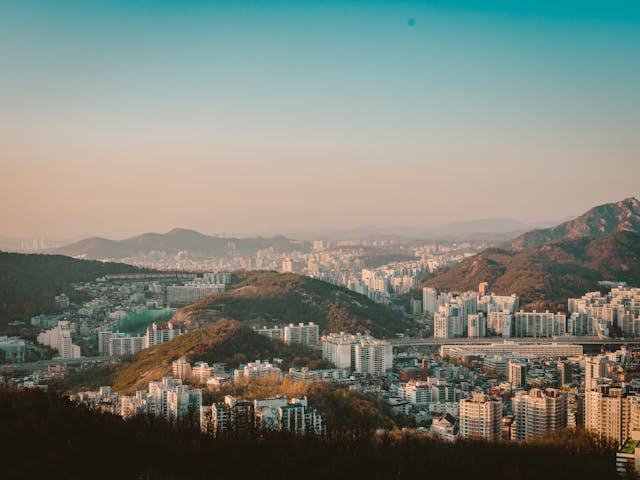
There are various types of Hanok villages in Korea in attention on tourists attractions. Recently, Hanok Village, where you can experience old villages with traditional Hanoks and modern Hanoks, is attracting attention as a new tourist attractiveness.
Buckhon Hanok Village If you climb the hill of Bukchon Hanok Village, you can enjoy a unique landscape where traditional Korean houses and Seoul’s modern architecture come together in harmony.
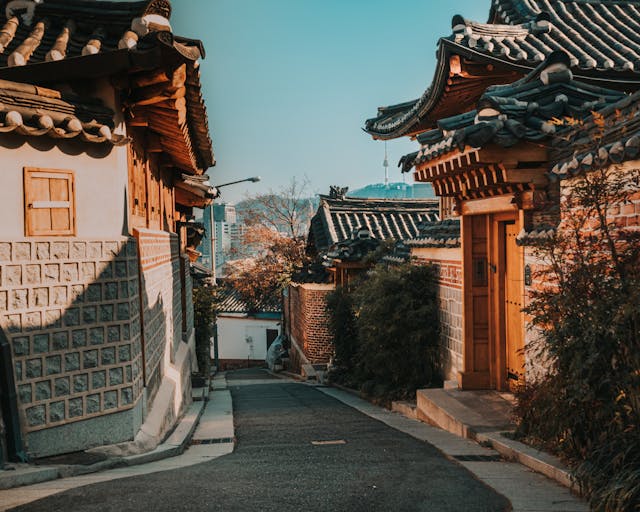
Bukchon Hanok Village and Namsangol Hanok Village are located in the middle of Seoul Korea tourist attractions, where a forest of buildings forms, allowing you to feel the coexistence of the past and present. Jeonju Hanok Village, the largest Hanok village in Korea, has 625 old tile-roofed houses and modern Hanoks with a modern feel coexist. It is much loved because it is not just a cultural product as a spectacle, but also because tourists can enjoy traditional experiences such as tea ceremonies and hanji (traditional Korean paper) knitting in a traditional space.
In addition, Gongju Hanok Village in Chungcheongnam-do, Gangneung Ojukheon Hanok Village in Gangwon-do, and Gulim Hanok Village in Yeongam, Jeollanam-do are simpler than Jeonju Hanok Village, but they are enough to experience Korean culture for tourist attractions.
Although it is not a Hanok village, that find tourist attractiveness you can experience traditional Hanok at Seongyojang located in Gangneung, Gangwon-do. Seongyojang is a house of the Joseon Dynasty upper-class noble family, and its original form has been well preserved for over 300 years, and descendants still reside there.
Sungnyemun & Namdaemun Market
This is the southern main gate of the old Seoul Fortress Wall. It is usually called Namdaemun, but its original name is ‘Sungnyemun’. It was designated as National Treasure No. 1 and is the largest existing castle gate building in Korea tourist attractions. It was damaged by a fire in 2008, but was restored to its original appearance.

To the east of Sungnyemun Gate is Namdaemun Market tourist attractions. It is a famous spot where shoppers and tourists flock because there are plenty of things to see, shopping items, and food. You can purchase a variety of products including clothing, kitchenware, home appliances, and daily necessities at low prices, and it is also famous for food alleys such as braised cutlassfish alley and kalguksu alley.
Heunginjimun & Dongdaemun Market (located in Korea tourists attractions place)

It is the eastern gate of old Seoul. Modern people usually call it Dongdaemun, but its original name was ‘Heunginjimun’. Nearby, there is a large commercial district commonly known as Dongdaemun Market.
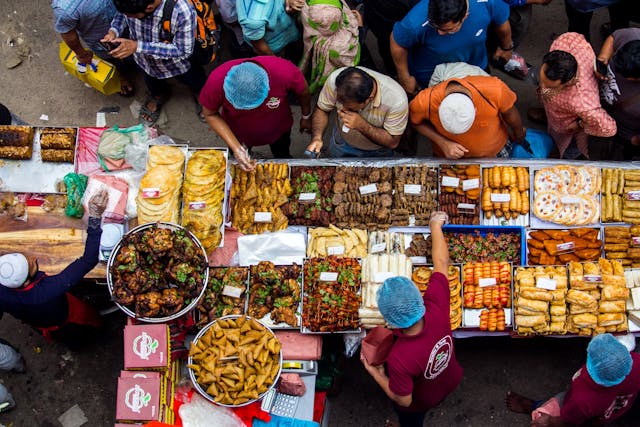
Dongdaemun Market is the name that refers to Gwangjang Market, Pyeonghwa Market, Shinpyeonghwa Market, and Dongdaemun General Market. Because most of the sales are made up of clothing, the term ‘Dongdaemun Fashion’ was coined. In addition, business during the night as well as during the day, which operates in the form of a wholesale market, creates new cultural consumption of clothing and greatly contributes to revitalizing the market Seoul Korea tourist attractions.
In 2014, Dongdaemun Design Plaza (DDP), the world’s largest irregular building, opened near Dongdaemun Market. Thanks to the futuristic design of Dongdaemun Design Plaza, the simple and folksy atmosphere of Dongdaemun Market has changed to a somewhat modern one, and the main consumer base is expanding to include young people and foreigners make tourists attractions.
Gwanghwamun Square

is a large plaza created in the center of the road leading from Gwanghwamun in Seoul to the Sejong-ro intersection? The space that was previously used as a roadway was turned into a park and has been open to the public since 2009.
Gwanghwamun Square was completely transformed into a historical and cultural space for citizens, as it contained the meaning of returning Seoul’s central street, which has a long history of over 600 years, to the citizens. Statues of King Sejong and Admiral Yi Sun-sin are erected here, and it was built to provide a view of the nearby natural scenery, including Gyeongbokgung Palace and Mt. Bukaksan.
FOOD TOUR Market ( most popular tourist attractiveness)
Gwangjang Market ( Seoul Korea tourist attractions )
To truly experience Korea’s food culture, you must visit a traditional market ensure to make tourists attractions. You can taste the Korean food that locals love without pressure in a warm market atmosphere.
Gwangjang Market in Jongno, Seoul is historically significant as it is Korea’s first permanent market with a history of over 100 years. Drug gimbap, a small kimbap the size of a finger dipped in mustard sauce, is highly addictive and attracts people. In addition, beef yukhoe and bindaetteok are also famous.

Gwangjang Market
Gwangjang Market, Korea’s first permanent market must visit seoul Korea tourist attractions, is a paradise for common people’s food such as kimbap and bindaetteok.
Tongin Market
At Tongin Market, located in Jongno-gu, Seoul Korea tourist attractions, you can taste a variety of foods and have a unique experience that you can’t get anywhere else. The reason why this place is special is because of the ‘Yeopjeon lunch box’.
Yeopjeon is a coin-shaped currency made of brass that was used during the Joseon Dynasty. Although it is not currently used in Korea, it can be used as currency within Tongin Market. When a customer purchases a coin, they are provided with a lunchbox.
This lunchbox acts as a kind of wallet, and with this, people can enjoy the unique pleasure of walking around the market and exchanging the coins for the food they want. The food you can taste at the market is simple but diverse. These are the menu items that Koreans enjoy eating in their daily lives, including rice and soup, the staple

Tongin Market
At Tongin Market, you can taste a variety of foods, including the market’s specialty, oil tteokbokki, in a buffet format.
food of Koreans, as well as side dishes such as tteokbokki, tteokgalbi, rice balls, and egg rolls.
Jeonju Food Tour (tourist attractiveness)

Jeonju is a city that Koreans also visit for food tourism. Jeonju’s food culture has developed for a long time thanks to fresh seafood brought in from the West and South Seas and crops harvested from the fertile land.
Jeonju Bibimbap is a must-try food in Jeonju. It is a food made by mixing rice cooked with Jeonju bean sprouts with zidane, ginkgo nuts, pine nuts, chestnuts, walnuts, and fresh vegetables.
Jeonju Hanjeongsik is a menu of about 30 side dishes, including stews, stews, vegetables, and salted fish, served on one table, allowing you to experience the generous hospitality of Korea.
In addition, ‘Gamaek’ can be selected as Jeonju’s unique food culture. ‘Gamaek’, which means store-bought beer, means purchasing beer at a small local store or supermarket and eating the snacks (mainly squid, pollack, and snacks) provided there with Jeonju’s unique seasoning. Thanks to the popularity of Gamaek, the ‘Gamaek Festival’ has been held every year in Jeonju since 2015.
Sokcho , a seafood paradise
Sokcho, Gangwon-do, located along the sea, is home to abundant seafood from the east coast. You can taste a variety of foods, including various fish, squid, and shrimp.
Daepo Port Shrimp Fry Alley is a must-see for sightseeing in Sokcho. Fresh shrimp are fried on the spot and have a great crunchy taste. Additionally, if you go around Sokcho Tourist & Fishery Market, Gaetbae Dock, Daepo Port, and Dongmyeong Port, you can taste raw squid, squid sundae, water gomtang, red snow crab, grilled fish, etc.
Even though it is not seafood, fried chicken is a representative food of Sokcho. Dakgangjeong is a food made by frying chicken cut into bite-sized pieces and mixed with seasoning. Depending on the seasoning, you can choose between spicy and sweet flavors.
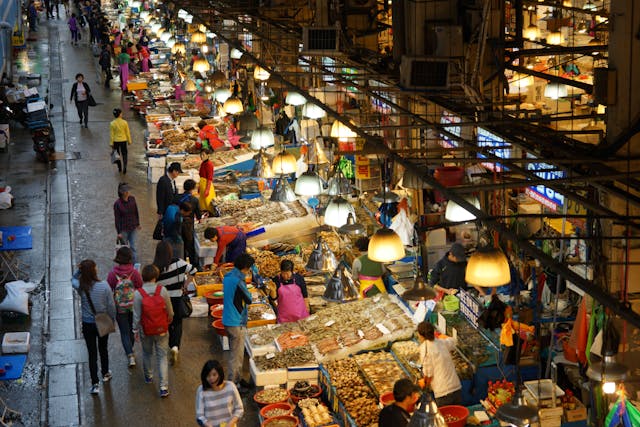
Busan Food Tour
Busan is a city optimized for gastronomic travel as it has convenient public transportation and plenty of food everywhere. Jagalchi Market, famous for its catchphrase ‘Oiso, Boiso, Saiso’, is the largest seafood market in Korea. There are a variety of seafood including sashimi, crab, lobster, shrimp, shellfish, and grilled fish. Grilled eel, made with whale meat and eel grilled over charcoal fire, is a delicacy that is difficult to taste anywhere else.
BIFF (Busan International Film Festival) Street, Nampo-dong Food Alley, and Gukje Market are a paradise for street food. You must try ‘Seed Hotteok’, which is a sweet hotteok filled with nuts, ‘Fishcake Skewers’, which are fish cakes skewered and dipped in soup, and ‘Bibim Glass Noodles’, which are glass noodles and vegetables mixed in spicy seasoning.

Delicacies of Mokpo Jeolla-do
located in the southern part of the Seoul Korea Peninsula, is a region known for its delicious food thanks to its geographical location where the sea and land meet and its mild climate. Mokpo, a port city located in the southwestern part of Jeolla-do, is, along with Jeonju, the city of taste that represents Jeolla-do.
Three-legged octopus is a specialty product caught only in the area near Mokpo. It can be eaten alive by rolling it around wooden chopsticks and eaten whole, or it can be boiled with vegetables and eaten as Yeonpotang.
There are many people who like fermented skate due to its strong scent and spicy taste, but it is worth experiencing at least once if you come to Mokpo.

Jeju Island Local Food
Jeju Island, one of the most loved travel destinations by Koreans, is far from the mainland, so the island’s unique local food has developed. Rather than using a variety of ingredients or adding various seasonings, most dishes are simple and preserve the original taste of the ingredients.https://tourticketer.com/never-miss-this-best-9-street-foods-in-korea/
‘Grilled Black Pork’, which is made by grilling chewy black pork over charcoal; ‘Mom Soup’, which is made by boiling pork bones to make a broth and boiling it thick with buckwheat flour and mojaban (a type of seaweed); ‘Omegi rice cake’ and ‘Omegi alcohol’ are representative local foods. ‘Udo Peanuts’, grown in the sea breeze of Udo, an island within an island, are delicious eaten with the shell or enjoyed with ‘Udo Peanut Ice Cream’ or ‘Udo Peanut Makgeolli’.

Boseong Green Tea Field (located in Seoul Korea tourist attractions place)

Boseong Green Tea Fields
At Boseong’s green tea fields, you can experience Korean tea culture along with green tea tasting.
Boseong is Korea’s largest tea producing area with over 4,000 tea gardens, and is worth a visit if you are a tea lover or interested in Korea’s traditional tea culture. Most tea gardens offer tea-related experiences such as green tea tasting, tea leaf picking, green tea making, and tea ceremony etiquette.
Even if you don’t experience it, just savoring tea at the tea cafe in the tea garden and appreciating the beautiful scenery of the tea garden is enough to make it a satisfying trip.
Pork Belly Tour (tourists attractiveness place)
Grilled pork belly is one of the most popular tourist attractions dining out and home cooking menu items for Koreans. Samgyeopsal is the part attached to the pork ribs, and is given the name samgyeopsal because of the shape of the meat and fat layered three times. In the West, pork belly is smoked, sliced thinly, and eaten as bacon, but in Korea, most people eat it grilled.https://tourticketer.com/10-local-foods-in-korea/
It is served with ssam vegetables such as lettuce or perilla leaves, pickled onions, green onion salad, or dipped in a sauce such as ssamjang. Grilled pork belly is a popular food and not a regional specialty, so it can be enjoyed anywhere in the country.
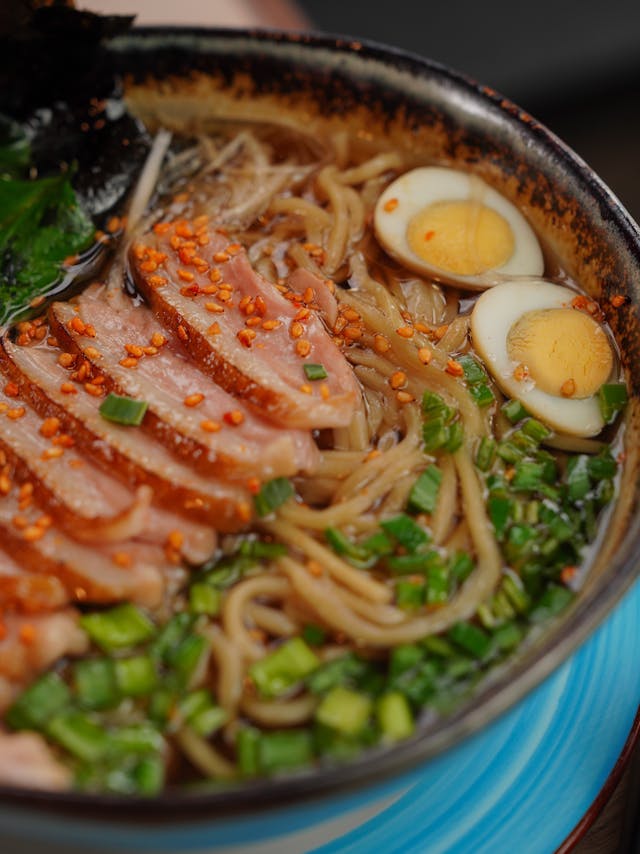
Rest Area Food
Highway rest areas in Korea are loved as multi-purpose spaces that provide more enjoyment than just a short rest during a trip. Each rest stop reflects the unique culture of the region depending on its location, giving the feeling of visiting a new tourist destination.
For example, the Andong Rest Area in Andong, famous for its traditional crafts, has an Andong Cultural Experience Center that displays crafts, and the Yeoju Rest Area in Yeoju, famous for its ceramics, has a pottery experience center where travelers can try making pottery. Food, which is an essential part of rest areas, is not just about filling hungry stomachs.
A variety of menus have been developed to allow tourists to experience the representative food culture of the area where the rest area is located, allowing tourists to simply and conveniently taste the food unique to the area. We provide you with the pleasure of being there.
Gangneung Rest Area sells ‘Chodang Tofu Dried Pollack Haejangguk’ made with Chodang Tofu (tofu made from seawater), a Gangneung local food. At the Cheongsong Rest Area in Cheongsong, famous for its apple cultivation, you can taste ‘Cheongsong Apple Pork Cutlet’, and at the Ginseng Rest Area located in Geumsan, you can taste ‘Ginseng Galbitang’ made with ginseng, a specialty of Geumsan.
Gangneung Coffee Street
There are about 30 coffee shops concentrated near Anmok Beach in Gangneung, and this street is called ‘Gangneung Coffee Street’ or ‘Anmok Coffee Street’. After 2000, Gangneung became a coffee mecca as the first generation of baristas who led Korea’s coffee culture settled in Gangneung. Most coffee shops are roastery cafes that roast their own coffee beans, providing a variety of coffee tastes and aromas that differentiate them from franchise coffee shops. As word of mouth spread about this, Gangneung established itself as a top coffee city in name and reality
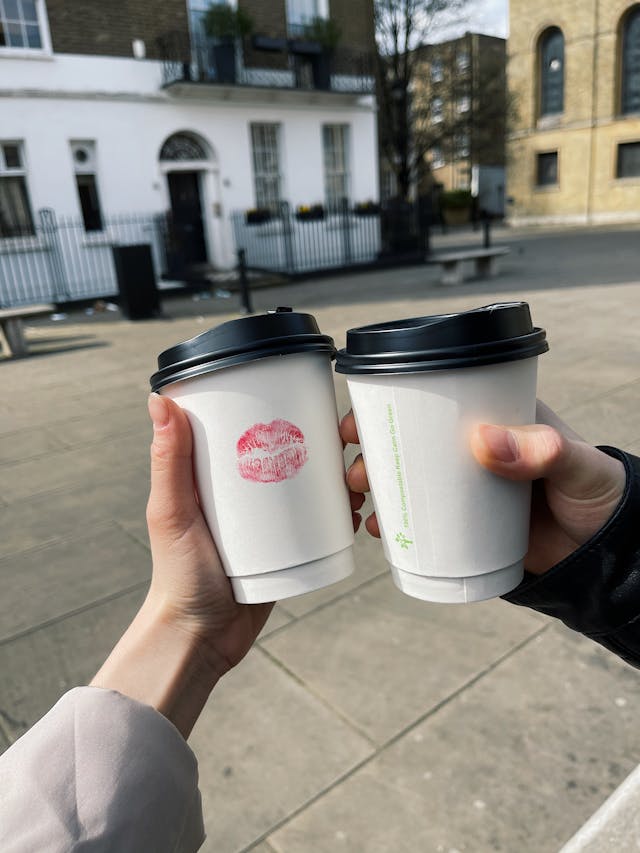
In Gangneung, a variety of content related to coffee is being built, including not only a coffee street, but also a coffee museum, coffee factory, and barista academy.
NATURE AND HEALING TOURIST PLACE ATTRACTION
National Parks (Seoul Korea tourist attractions)
In Korea, national parks are designated and operated by the country to preserve the natural ecosystem and natural and cultural landscapes. As the designation
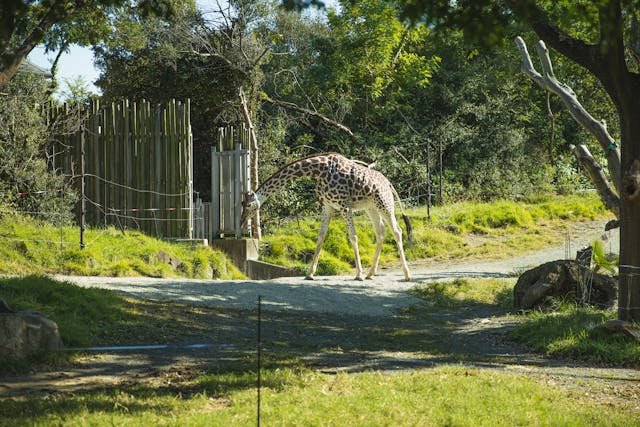
requirements are strict, national parks can be said to be a healing comprehensive gift set that allows you to enjoy the natural ecosystem, natural scenery, and cultural scenery all at once. In addition, it is a treasure trove of natural ecosystems where 45% of Korea’s biological species and 65% of endangered species live, and it is also a tourist destination where 733 designated cultural assets, including scenic spots and temples representing Korea, are located.
Currently, Naejangsan National Park, Odaesan National Park, and Jiri Mountain are located there. There are 22 national parks across the country, including the National Park and Hallasan National Park, which are loved as resting places by Koreans.
Natural Recreation Forest

Natural Recreation Forest is the optimal healing place where you can heal your body and mind in clean nature. Korea has about 170 natural recreation forests across the country. There are many places located in the valley, so it is a favorite place for vacationers in the summer. It is well-equipped with facilities such as forest bathing, hiking trails, walking trails, auto camping sites, and water parks, making it a great place to stay overnight.
‘Yumyeongsan Natural Recreation Forest’, located in Gapyeong, Gyeonggi-do, is Korea’s first natural recreation forest with a 30-year history. It is easily accessible from the metropolitan area and has well-equipped facilities, so it has the largest number of users among the natural recreation forests in the country. Free forest commentary is also provided to provide users with knowledge about the forest and natural environment and guide them on the correct way to experience the forest.
‘Jungmisan Natural Recreation Forest’ in Yangpyeong, Gyeonggi-do is also easily accessible from the metropolitan area and has well-developed trails. There is Jungmisan Observatory nearby, so you can enjoy the stars at night.
Cheongtaesan Natural Recreation Forest, located in Hoengseong, Gangwon-do, is a forest bathing area densely covered with beautiful coniferous trees such as pine trees. You can breathe in as much phytoncide as you want, and if you visit in winter, you can enjoy the beautiful snow scenery.
‘Namhae Cypress Natural Recreation Forest’, located in Namhae, Gyeongsangnam-do, is a dense forest of cypress trees. It is located at a point overlooking the southern sea, so the surrounding scenery is beautiful and you can observe rare animals and plants.
Gyemyeongsan Natural Recreation Forest, located in Chungju, Chungcheongbuk-do, is located at the northern foot of Gyemyeongsan Mountain, along Chungjuho Lake. Namsan Park is also a popular tourist destination as there is Wolaksan National Park nearby.
Namsan Park, located in Jung-gu, Seoul, is considered an essential tourist attraction in Seoul along with Myeong-dong, but it is close to daily life for Seoul citizens and office workers nearby. This is because it is a recreational place where you can regain your peace of mind and strengthen your physical strength by walking on a walking course during your free time, such as on the weekend or during lunch time. Recently, it was designated as an urban natural park, further emphasizing its value as a green space and recreational space.
Namsan Park is full of pine trees and flowers blooming all year round, giving visitors the appreciation of nature and the joy of walking. The height of Namsan Mountain is 265m, and you can climb to the top of the mountain by walking along the hiking trail for about an hour from the entrance of Namsan Park. At the top of Namsan Mountain, Seoul’s landmarks, Namsan Seoul Tower and Octagonal Pavilion, stand.
At the foot of Namsan Mountain, there are the National Theater Korea tourist attractions, Seoul Metropolitan Library, and Namsangol Hanok Village, so you can take a break during your walk. You can get to the summit more easily and quickly by using an eco-friendly circular bus or cable car.
Seoul Forest Just

as New York has Central Park and London has Hyde Park, Seoul has Seoul Forest. Seoul Forest, formerly an amusement park, was reborn as a huge citizen’s forest and theme park in 2005 through redevelopment. Thanks to this, Seoul citizens now have green space, which they had been lacking, and can enjoy nature in the city without having to travel far.
Befitting the huge scale of 430,000 m2, it consists of various themed spaces such as Seoul Forest Plaza, Ttukseom Culture and Arts Park, nature experience center, Ttukseom Ecological Forest, and water playground.
There are many families visiting the area as it offers a roe deer feeding experience and amusement facilities, and the walking trails are well maintained, making it a popular date spot for couples. There are many cyclists in spring and fall.
Jeju Island

a parasitic volcano formed by an underwater eruption from Seongsan Ilchulbong on Jeju Island created tourist attractions
Jeju Island is Korea’s most loved travel destination and the largest island in Korea. It is located about 90km south of the southwestern tip of the Korean Peninsula, so you can enjoy unique natural scenery that is different from the mainland. The charm of Jeju Island is largely due to its natural elements, including the clear and transparent emerald sea, Hallasan Mountain with its natural beauty, Oreum, a parasitic volcano created by volcanic eruptions, strangely shaped rocks created by wind and waves, and citrus farms.
Thanks to this charm, it has recently been in the spotlight as an international resort frequented by foreign tourists from China and Japan.
Jeju Island, created through volcanic activity, boasts such diverse and unique volcanic topography that the entire island can be called one giant volcano museum. There are 368 large and small volcanic cones above the ground, and about 160 lava tubes below the ground, scattered throughout the island. In recognition of these geographical features and values, Jeju Island was designated as a biosphere reserve in 2002. It was registered as a World Natural Heritage site in 2007, and was certified as a World Geopark in 2010.
Hallasan is Jeju Island’s representative tourist destination. This is because it is the highest mountain in Korea and allows you to heal your body and mind by breathing with nature. It has a variety of volcanic topography, including Baeknokdam, a volcanic crater located at the top of the mountain, steep rock walls including Yeongsilgiam, and about 40 oreums. The entire mountain is mostly made of basalt, a volcanic rock.
Additionally, Hallasan has a unique ecosystem and biodiversity. Depending on the altitude, a variety of plants are distributed, from subtropical plants in lowlands to alpine plants in highlands.
Another natural tourist destination representing Jeju Island is Seongsan Ilchulbong. Seongsanil Chulbong, located in the east of Jeju Island, is a 182m high volcanic vent and was designated as a natural monument in 2000. When you climb to the top of Seongsan Ilchulbong, you can enjoy the wide crater and the magnificent view of the ocean unfolding before your eyes.
The crater, which is concave like a bowl, is home to over 200 species of plants and various animals, including silver grass. The sunrise seen from the top is spectacular, so it is also famous as a sunrise spot, and the ‘Seongsan Sunrise Festival’ is held every year on December 31st.
The lava tube is one of Jeju Island’s unique natural tourist attractions that is different from the mainland. There are more than 160 lava tubes on Jeju Island, which are caves formed under the surface of lava. Many tourists visit Manjanggul Cave, Gimnyeong Cave, and Bengdwigul Cave to experience mysterious nature.
Yongcheon Cave, which boasts a huge size of 2.5km, is evaluated as a rare and unprecedented cave in the world as it has the characteristics of both a limestone cave and a lava cave. Unfortunately, the lava tube is not accessible to the general public due to the possibility of damage to the interior.
Ulleungdo & Dokdo
Ulleungdo is a volcanic island that represents Korea along with Jeju Island. It consists of the main island, Ulleungdo, Dokdo, Jukdo, and Gwaneumdo, which is currently uninhabited.
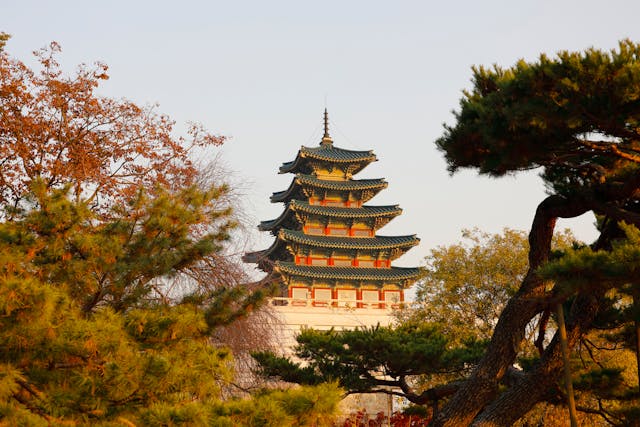
Dodong Port on Ulleungdo, a volcanic island in the East Sea
Ulleungdo is 130km east of the mainland, so its ancient nature, untouched by human hands, is preserved as is. It is a place full of natural mysteries that cannot be seen on land, such as the clean sea, the outstanding coastal scenery created by steep cliffs, Nari Basin, and Korea’s only natural primeval forest. The unique village structure is also something to see. Ulleungdo Island has several valleys formed around Seonginbong Peak. The terrain is rugged, so straight roads are rare, and the village is formed surrounding the island.
Dokdo, located southeast of Ulleungdo, is the easternmost island in Korean territory. The island itself boasts such a natural beauty that it has been designated as Natural Monument No. 336, and has unique natural scenery such as columnar joints. Dokdo is currently inhabited by Korean guards and residents.
Suncheon Bay Area
Suncheon Bay is a coastal wetland located on the southern coast. It includes river topography such as pristine mudflats, salt marshes, natural embankments, flood plains, and hinterland wetlands. It is famous for its beautiful scenery of reed fields and S-shaped waterways spread across the mudflats.

Suncheon Bay Reed Field, the largest reed colony in Korea
The vast reed field of 5.4 km2 is the largest and best-preserved reed field in Korea. In fall, many tourists flock to see the beautiful light-colored reeds swaying in the wind.
Suncheon Bay National Garden is Korea’s first national garden. It was created when the 2013 Suncheon Bay International Garden Expo was held. It is composed of various themes, including an arboretum, water garden, and oriental medicine herb garden. The Suncheon Bay International Garden Expo is scheduled to be held in Suncheon Bay National Garden and downtown Suncheon in 2023.
Hwadam Forest
Hwadam Forest, make tourists attractions located in Gwangju, Gyeonggi-do, has recently emerged as a new natural and ecological tourist destination. Opened in 2013 with the goal of protecting the ecosystem, it collects and exhibits over 4,000 species of endangered plants and animals.
A forest of pine and maple trees continues along the valley and the foot of the mountain, and a gently sloping trail is built around it, allowing you to enjoy a leisurely stroll. The largest pine garden in Korea and the only moss garden in Korea are the pride of Hwadam Forest. You can easily reach the top by riding the eco-friendly monorail that runs on electricity.
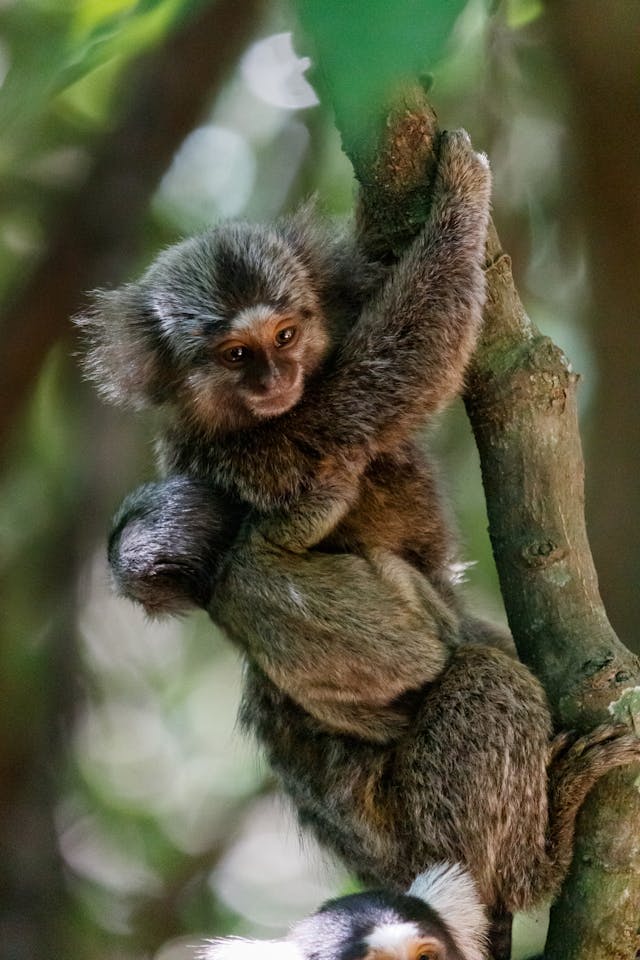
TRAVEL ACTIVITIES THAT ATTRACTION IN TOURIST PEOPLE
Bicycle Riding
Seoul Korea tourist attractions has well-maintained bicycle paths throughout the country. There are also public bicycles well-equipped in each city, so there is no problem in enjoying riding even if you do not have a bicycle. It varies slightly from region to region, but in most cases, you can easily and conveniently use public bicycles at an affordable price of around 1,000 won per hour. Seoul operates public bicycles under the names ‘Ddareungi’, Goyang, Gyeonggi Province, ‘Fifteen’, Daejeon, ‘Tash’, and Sejong, ‘Ouling’.
The ‘Hangang Bicycle Road’, built around the Han River in Seoul, is a representative riding course. It is a road that starts from the Nanji District of the Han River and connects Gwangjingyo Bridge through Mapo Bridge, Banpo Bridge, Seoul Forest, and is the longest riding course in Korea. Because it connects Seoul to satellite cities and is adjacent to Hangang Park, it is loved by many Seoul citizens and tourists.
Recently, riding courses within the Gyeongchun Line Forest Trail have been attracting attention among young people thanks to the newtro craze. The Gyeongchun Line Forest Trail is a place where an abandoned railroad road has been renovated into a forest path, and there is a well-paved bicycle path next to the railroad track.
The ‘Bukhangang Bicycle Path’, which connects Seoul and Chuncheon, passes beautiful lakes and mountains such as Cheongpyeong Lake and Uiam Lake. You can run comfortably while enjoying the beautiful natural scenery.
The Gyeongin Ara Waterway is Korea’s first canal that connects the sea off Incheon and the Han River. There are bicycle paths on both sides of the Ara Waterway, and they are connected to the Han River bicycle path, so you can ride a bicycle from Seoul to the West Sea.

Auto Camping for tourist attractiveness
Over the past two years, Korea’s camping population has increased by 33.9%. As demand has increased exponentially, the number of camping locations has also increased, and the ways to enjoy camping have also become more diverse. In Korea, you can enjoy camping in a variety of ways depending on your preference, such as auto camping, glamping, caravanning, car camping, and backpacking.
There are about 2,300 auto camping sites in Korea tourist attractions. Among them, many campers prefer camping sites located within national natural recreation forests because they are cost-effective. Camp sites can be reserved on the National Park Service website on the 1st and 15th of every month, and they are so popular that reservations close within half a day after opening.
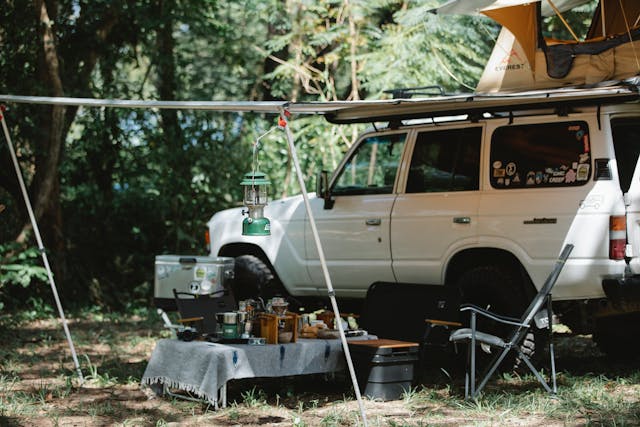
Competition for reservations is fierce even at campsites located in the city center. Representative examples include Nanji Camping Site and Noeul Camping Site in Seoul, and Jaraseom Auto Camping Site in Gapyeong, Gyeonggi Province.
During the summer vacation season, camping sites within the beach are also popular due to the advantage of being close to the sea. Recently, the number of camping sites that operate activity zones such as swimming pools and water leisure activities is increasing.
Water Activities
As the surfing boom began in earnest in Korea in 2015, the number of tourist destinations where you can enjoy water activities has increased. In particular, the surfing population in Korea is increasing as it is emphasized that surfing allows you to appreciate the beauty of the sea while also enjoying the thrill and sense of freedom.
The top three surfing spots in Korea are Yangyang, Gangwon-do, Busan, and Jeju Island. Because the surfing environment is well-equipped, many surfers, from beginners to experts, visit. Jukdo Beach in Yangyang is known as a surfing mecca thanks to its low water depth and waves suitable for surfing. Songjeong Beach in Busan, Jungmun Saekdal Beach in Jeju Island, and Mallipo Beach in Taean, Chungcheongnam-do are also famous.
Canoeing and kayaking are activities that allow you to enjoy nature in a more relaxed way. Recently, more and more people are looking for transparent kayaks. It is an experience of floating on the water in a transparent kayak that allows you to see through the bottom. Jeju Island offers kayaking experiences in most seas. Representative examples include Pyoseon Beach, Handam Beach, Woljeongri Beach, and Soesokkak, located at the point where the sea and river meet.
Jangho Port, located in Samcheok, Gangwon-do, is called ‘Korea’s Naples’ due to its beautiful scenery, including unique rock formations and emerald waters. The water is clean and the depth is low, allowing marine activities such as transparent kayaking and snorkeling to develop. You can also enjoy canoeing and kayaking at Cheongpung Lake in Jecheon, North Chungcheong Province.
Activities that involve exploring the ocean, such as snorkeling and scuba diving, are consistently popular. Representative snorkeling spots include Panpo Port in Jeju Island, Bongpo Beach in Goseong, Gangwon Province, and Namae Beach in Yangyang, Gangwon Province.
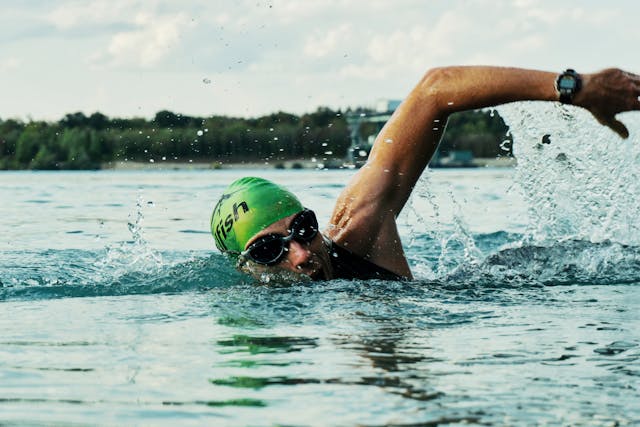
HOT PLACE (POPULAR ATTRACTION)
Ikseon-dong Hanok Street
The alley has recently been in the spotlight as a hot place preferred by young Koreans. In most cases, parking is difficult or the alleys are narrow enough for only two people to walk, but this space, which was once a place for livelihood or living, has been reorganized with a youthful sense to provide unique enjoyment as a new cultural consumption space.
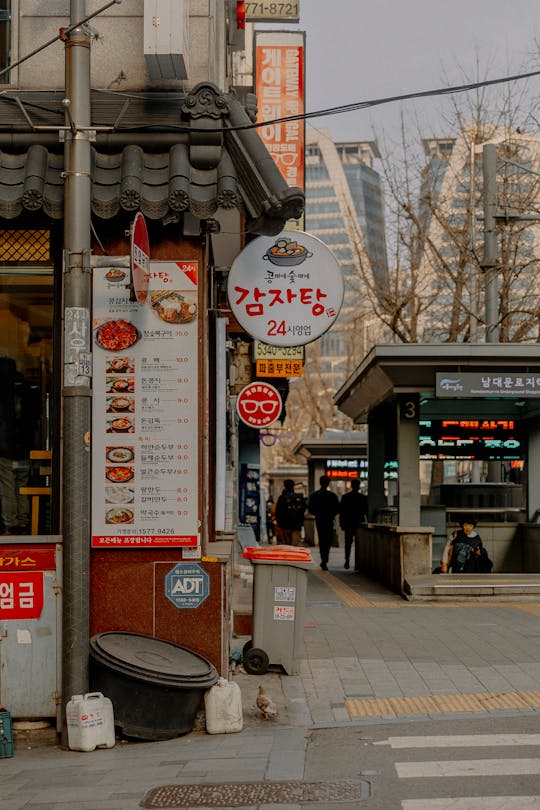
Ikseon-dong, Seoul is full of unique cafes and restaurants in renovated hanoks.
Ikseon-dong Hanok Street, located in Jongno-gu, Seoul, is the oldest Hanok village in Seoul and the last designated Hanok district in Seoul. In recent years, restaurants, cafes, and cute prop shops in renovated hanoks have opened here and there in this alley, and it has become a famous tourist destination as it became known through social media.
Seongsu-dong Street
Seongsu-dong, located in Seongdong-gu, Seoul, has been a handmade shoe alley where handmade shoe companies have been established since the 1970s. Then, after the 2010s, cafes with unique sensibilities and trendy fashion shops opened one after another, gaining popularity as a work place for digital nomads and a date spot, making it a hot place.
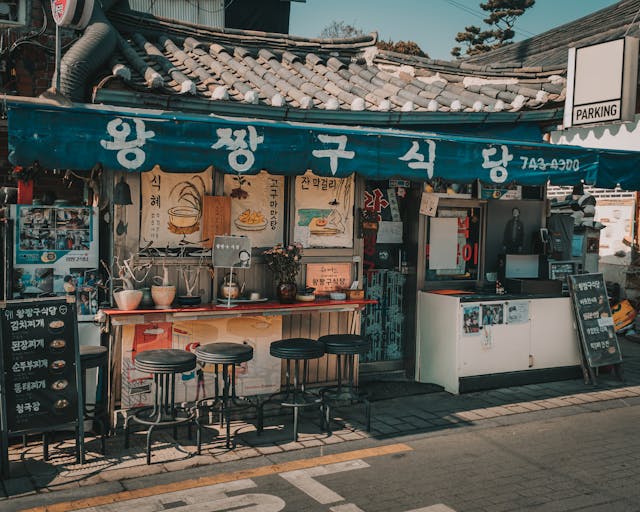
Recently, famous fashion shows, cultural exhibitions, and pop-up stores are flocking to Seongsu-dong, making the streets of Seongsu-dong rapidly emerging as a mecca for fashion and culture.
Euljiro Street
Euljiro Street, another tourist attractions located in Jung-gu, Seoul, was perceived as a bleak neighborhood until a few years ago. This is because it is a place where shabby shops, such as printing shops and tool stores, which are symbols of the old industry, are concentrated. However, recently this place has emerged as a new cultural space. In particular, thanks to the recent ‘Newtro’ craze, the bleakness of Euljiro, where time seems to have stopped, is becoming a driving force in transforming into a new cultural product by stimulating analog sensibilities and memories.
Cafes, pubs, and cultural complexes targeting the tastes of young people are combined with old print shops and tool shops, giving off a heterogeneous yet unique aura. Euljiro and Jongno in Seoul, which are home to many long-established restaurants, are attracting young office workers and students with their retro sensibility.https://kr.koreanculture.org/korea-information-tourism
